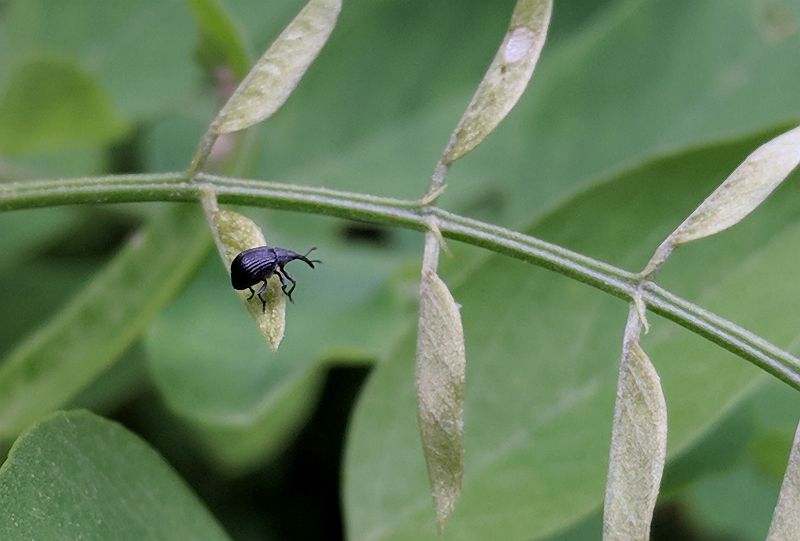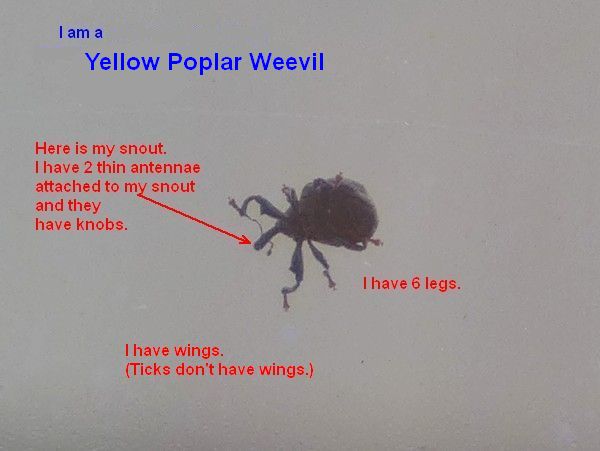
10 June 2018
At this time of year the weevils appear. I found one on black locust leaves in Schenley Park on Friday June 8.
At first, they hang out on plants but they can fly. In a “big year” they spread everywhere, landing on buildings and people and just about anything. By late June people are freaking out. They think they’re ticks.
But you won’t freak out. You’ll know what they are.
This is a yellow poplar weevil (Odontopus calceatus), a vegetarian that feasts on yellow poplars, tuliptrees, sassafras and cucumber magnolia trees. He’s usually kept in check by predatory insects but in “big years” there aren’t enough predators and his population goes wild.
The weevil’s body structure shows why he’s not a tick:
- Ticks have 8 legs (they’re related to spiders). Weevils have 6.
- Ticks don’t have wings. Weevils have wings under their elytra (wing covers). Though they don’t fly much you may see one raise his wing covers and zoom away.
- Ticks do not have snouts. Weevils have snouts like inflexible elephants’ trunks and 2 antennas on the snout.
- Ticks never swarm. Weevils swarm in June because they’re mating.

Late in June when the weevils swarm, amaze your friends . “Nope, it’s not a tick.”
(photos by Kate St. John)
Thanks for another timely and informative post.on How large in inches is the yellow poplar weevil? Thanks.
About 0.10 inches. (2.5 to 4 mm). Slightly larger than a tick.
Had one 2 weeks ago here in Homestead. Very tiny, possibly a juvenile.